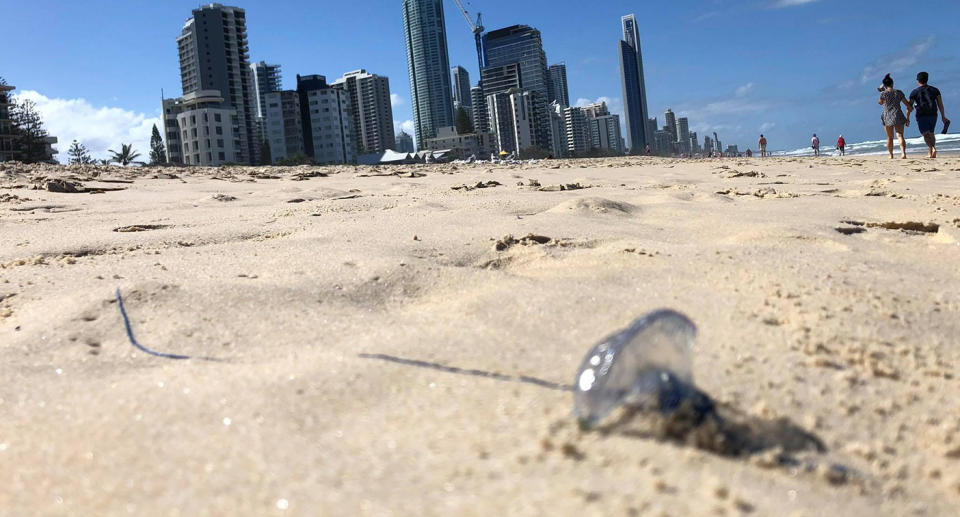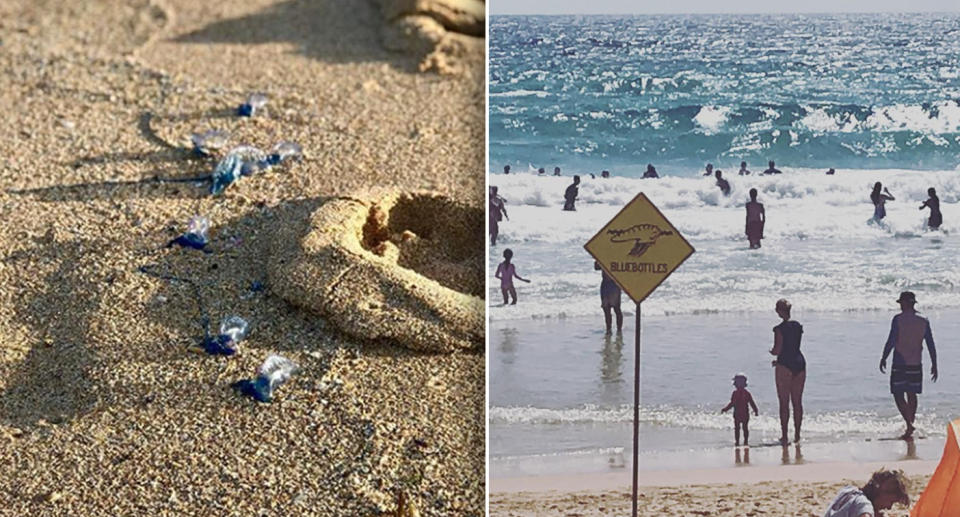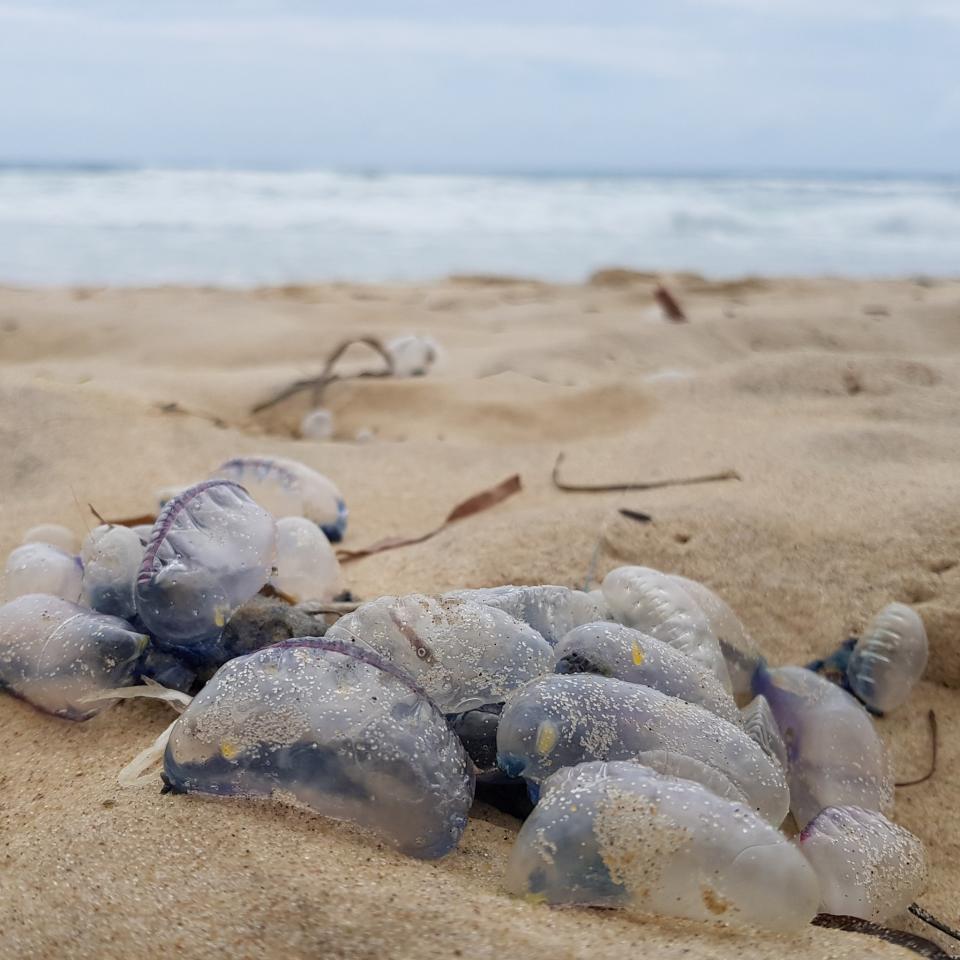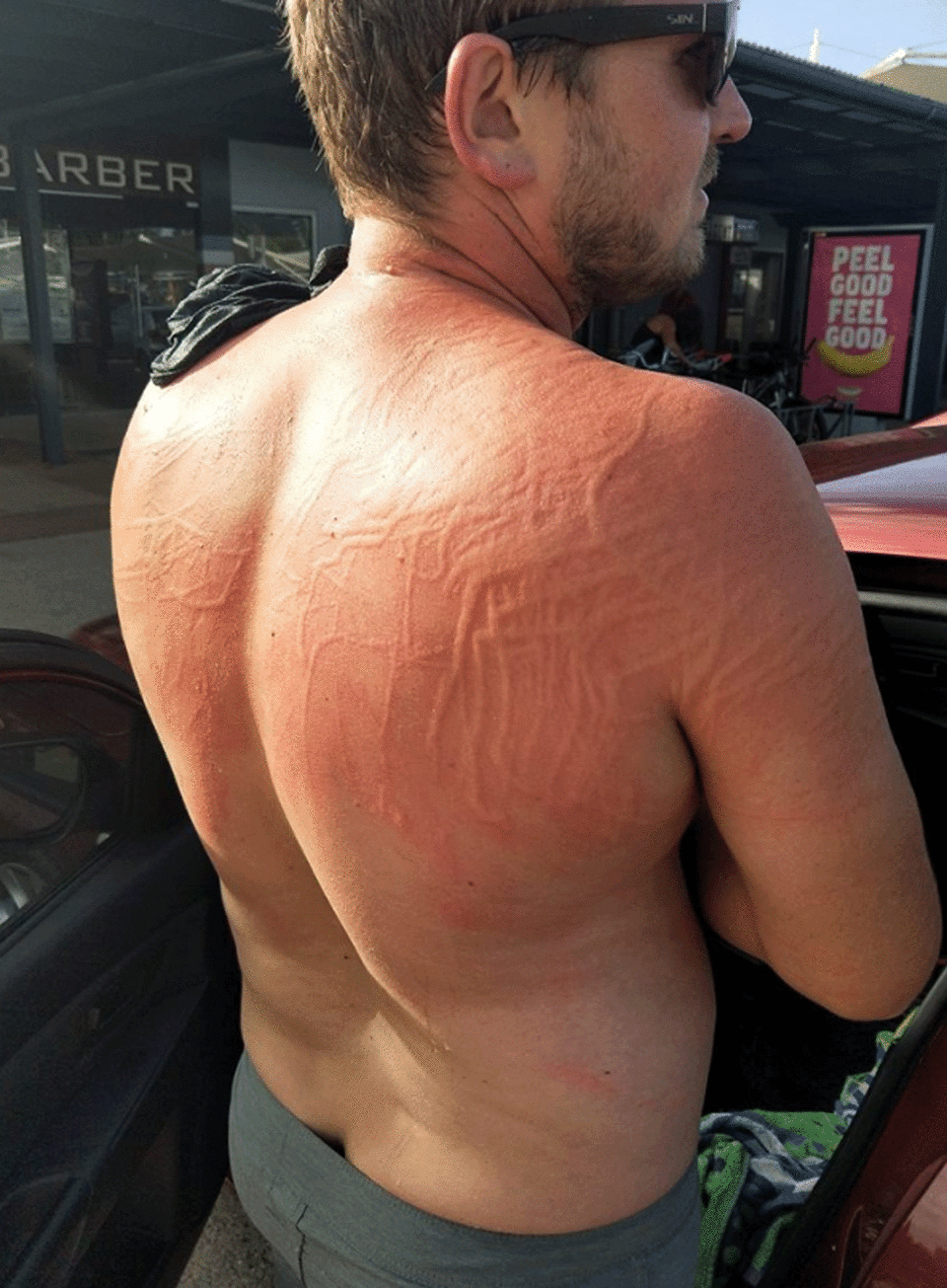How to treat a bluebottle sting - you may not be doing it right
Queensland is in the midst of a bluebottle invasion, with more than 22,000 stings reported across the state in the past six weeks.
The number of stings has more than tripled compared to the same period last year, leaving lifeguards run off their feet treating beachgoers.
Experts are now warning bluebottles and jellyfish are likely to spread further down the east coast as temperatures rise.
For swimmers who may encounter a bluebottle in the water, it’s important to understand the first-aid involved with stings – and the treatment may not be what you expect.


According to paediatric nurse and first aid author Sarah Hunstead, some stings aren’t felt right away.
“It can be up to 45 minutes after you’ve been stung that you may get symptoms,” she told Seven’s The Morning Show.
“Symptoms could include severe back pain and headache, shooting pains to your muscles, severe abdominal pain, nausea and vomiting, and eventually breathing problems as well.”
What to do when stung by a bluebottle
The widespread theory that urine can relieve the pain of a sting is not true, Ms Hunstead said.
“I think we should just call it. Don’t wee on it.”
“When it comes to bluebottles, urine doesn’t help. What you want to do first of all is flush it with copious amounts of seawater, not freshwater.”
Next, gently pick off any remaining tentacles before submerging the sting in hot water for 20 minutes.

“The problem is, when you’re at the beach, you don’t usually have the 42 to 45 degree hot water with you, so before you have that available get an ice pack,” Ms Hunstead said.
“Lifesavers usually have them. Get some ice on there, get home and then it’s 20 minutes in hot water.”
Marks from stingers can last for weeks
Another tip is to let someone else prepare the hot water for the patient, as someone trying to manage the pain of a sting may not pay proper attention to temperature and could burn themselves with the water.
If pain doesn’t start to recede, remove the sting from the hot water for 10 minutes and reapply the ice pack, before returning to the hot water for a further 20 minutes.
“You can do cycles of this for up to two hours,” Ms Hunstead said, adding that paracetamol can also be taken to help with pain relief.


“If you’re still in excruciating pain, you need medical help.”
More serious stings will require immediate hospital attention, for example if the tentacle has wrapped itself entirely around a limb, or if the sting is in a sensitive area like the groin, eyes or armpits.
In the event that a bluebottle is inhaled or swallowed, the sting should be treated as a medical emergency as swelling could occur and cause the airway to block off.
Last week, a swimmer was left with shocking stings after he surfaced from the water and a jellyfish “slid down his back”.
Brendan Osborn shared photos to his Facebook page of the huge welts he was left with after the sting, saying they could stay for weeks.

